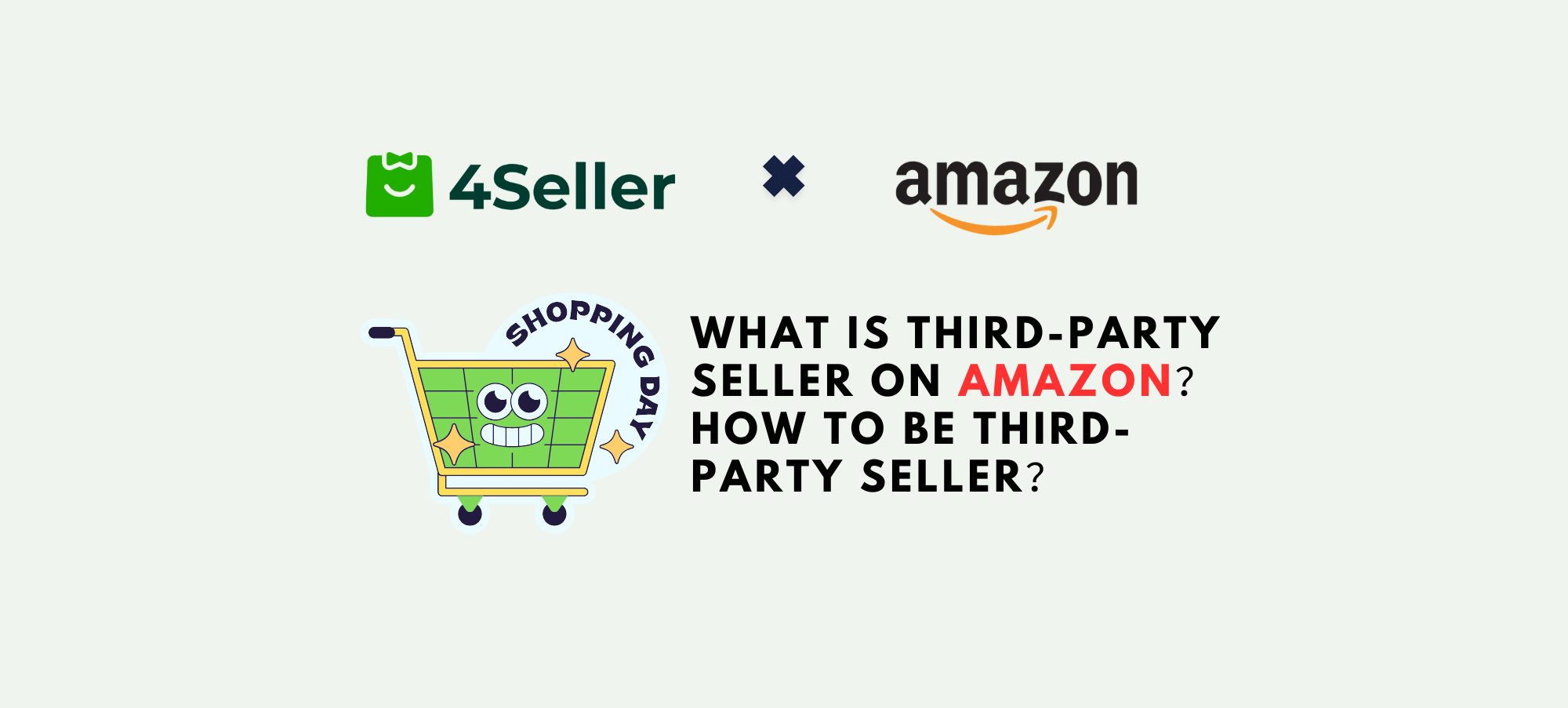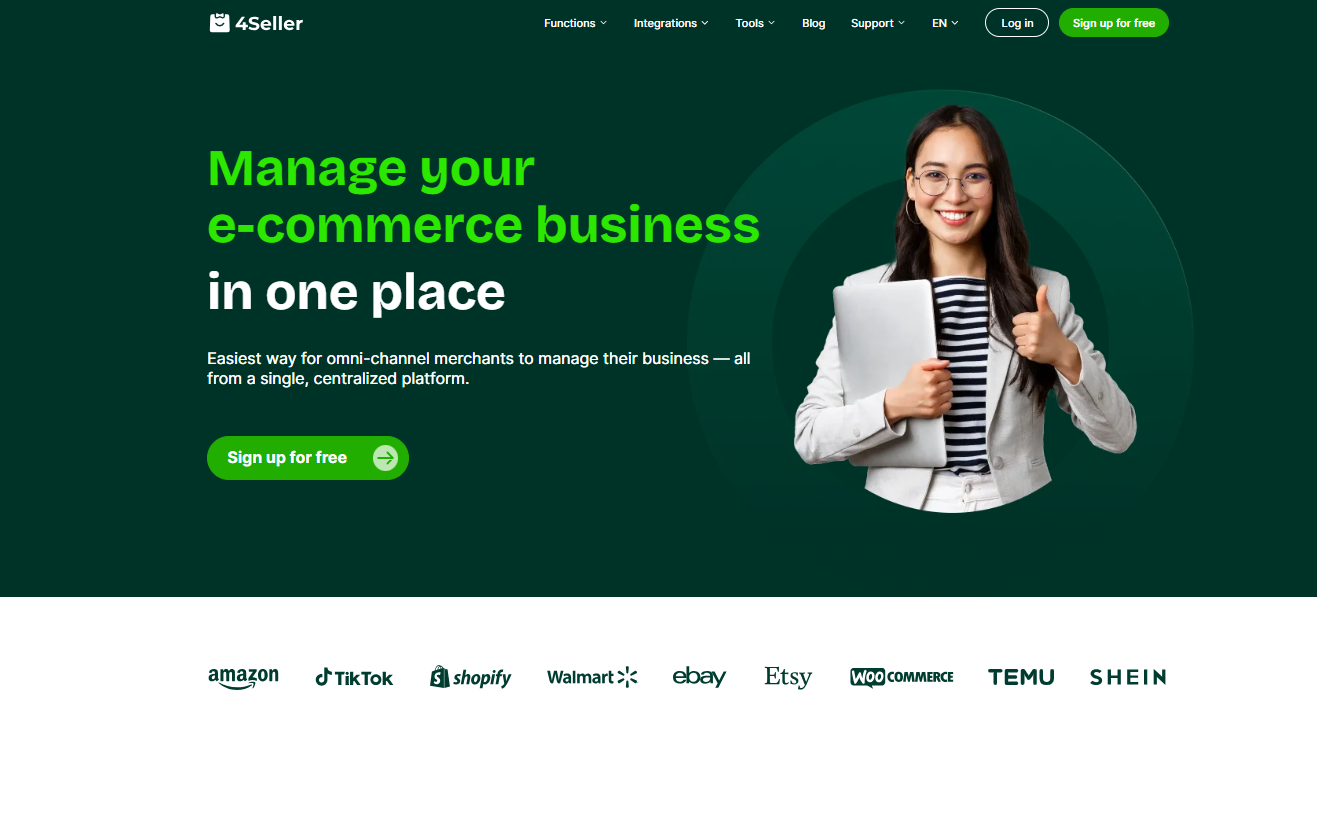Popular Posts
- Order Management
- TikTok Shop
- Temu
- About 4Seller
- Amazon
- Shopify
- Inventory Management
- Amazon MCF&FBA
- Amazon Shipping
- UPS
- FedEx
- DHL Express
- Listing Management
- Creator Bulk Invite
- GLS
- Seller Tips
- eBay
- Shein
- Marketplace News
- Royal Mail
- Amazon MCF
- Walmart
- Multi-channel Store
- Logistics Rule
- Shipping Integration
- Stripe Tracking Sync
- Poste Italiane
- UniUni
- USPS
- PayPal Tracking Sync
- OTTO
- Walmart WFS
- Yodel
- Kaufland
- BRT
- CaiNiao
- Chronopost
- CIRRO
- Correos
- Correos Express
- Deutsche Post
- DHL Parcel
- Etsy
- Evri
- GOFO
- Inventory Sync
- Beginner Tutorial
- DPD
- Shipping Label
- DHL
- FBM
- Platform Integration
- AliExpress
- 3PL
- Cdiscount
- OMS
- WooCommerce
What is Third-Party Seller on Amazon?How to be Third-Party Seller?
 By Amelia09 May,2025
By Amelia09 May,2025
I. What is an Amazon third-party seller?
In simple terms, an Amazon third-party seller is not directly operated by Amazon itself. Instead, it refers to an independent individual or enterprise. After completing the registration process on the Amazon platform, they can leverage the rich resources and extensive channels provided by the platform to carry out their online sales business. These sellers usually have their own brands and inventory, and they realize commercial value by displaying and selling products on the Amazon platform.
II. Characteristics of third-party sellers
Amazon third-party sellers have the following characteristics:
- Autonomy: Third-party sellers can independently choose the types of products they sell, pricing strategies, and promotional activities. They have the right to decide how to manage their stores and inventory.
- Flexibility: Third-party sellers can adjust their sales strategies and product portfolios according to market demand and changes. They can add or remove products at any time and manage their inventory based on demand.
- Brand building: Third-party sellers can establish their own brand image and reputation on the Amazon platform. They can build a brand image by providing high-quality products and excellent customer service and establish a good relationship with customers.
- Amazon platform support: As third-party sellers, they can enjoy a series of sales tools and services provided by the Amazon platform. This includes Amazon's logistics and distribution services, advertising promotion tools, sales data and analysis, etc.
III. Advantages of third-party sellers
Amazon third-party sellers have the following advantages:
- Market size and traffic: Amazon is one of the largest e-commerce platforms globally, with a huge user base and growing sales traffic. Third-party sellers can benefit from this large market size and traffic, thus expanding sales and increasing exposure.
- Focus on core business: As third-party sellers, they can focus more on product development, brand building, and sales strategies without having to worry about operational details such as logistics and order fulfillment.
- Flexible inventory management: Third-party sellers can manage their inventory according to demand and market changes. They can decide on the purchase quantity and inventory level based on the sales situation and trends of products, avoiding situations of overstocking or out-of-stock.
- Low cost and risk: Compared with traditional physical stores, becoming an Amazon third-party seller can greatly reduce the cost of opening a store and operational risks. There is no need to bear expenses such as rent, personnel costs, and inventory risks in traditional retail.
- Global sales opportunities: The Amazon platform provides global sales opportunities for third-party sellers. Through Amazon's international market and cross-border sales tools, third-party sellers can expand the sales of their products globally and open up more markets.
- Data-driven decision-making: The Amazon platform provides rich sales data and analysis tools to help third-party sellers gain in-depth insights into product sales situations, customer behaviors, and market trends. These data can help sellers make more informed decisions and optimize product pricing, promotional strategies, and inventory management.
IV. Differences between Amazon's self-operated products and third-party sellers
- Source of goods: Amazon's self-operated products are directly sold and shipped by Amazon. These products are called "Amazon Basics" products, usually developed and manufactured by Amazon or its partners. Third-party sellers sell their own products on the Amazon platform. These products are called "marketplace" products and are directly shipped by third-party sellers.
- Quality assurance and service: Amazon's self-operated products enjoy Amazon's quality assurance, fast delivery speed, and comprehensive after-sales service provided by Amazon. The products of third-party sellers are shipped by different merchants, so the quality of the products depends on the operational status and supply chain management of the third-party sellers.
- Delivery method: Amazon supports FBA (Fulfilled by Amazon) and FBM (Fulfilled by Merchants). Amazon's self-operated products are usually shipped uniformly by Amazon, that is, the FBA model. Third-party sellers can choose to use Amazon's delivery service (Fulfilled by Amazon) or handle the delivery of products by themselves (Fulfilled by Merchants).
For this situation, we usually recommend that sellers use erp tools to handle the delivery. Currently, erp systems in the market support Amazon sellers to use these two different delivery methods.
Taking 4Seller as an example, when using Amazon's delivery service, sellers only need to authorize their Amazon stores and warehouses to 4Seller. When using self-delivery service, in addition to authorizing the Amazon store, they also need to have their own logistics provider accounts.
4Seller supports the authorization of logistics providers such as USPS, UPS, DHL, and DPD, covering the main logistics channels in Europe and the United States to meet the needs of users in different regions of Europe and the United States. In addition, it also supports users to set logistics rules, automatically purchase shipping labels, and operate the store efficiently.- Product display: Amazon's self-operated products usually clearly display the label of "Amazon self-operated" or "Amazon-owned" on the product page. The product pages of third-party sellers generally do not display the label of "Amazon self-operated".
- After-sales service: Amazon's self-operated products provide after-sales service by Amazon. The products of third-party sellers require consumers to rely on the after-sales service provided by third-party sellers.
V. How to become an Amazon third-party seller
Becoming an Amazon seller allows you to sell products on the Amazon platform and gain a broader customer base and sales opportunities. The following are some steps to help you start becoming an Amazon seller:It should be noted that to become an Amazon seller, you need to comply with the platform's policies and regulations and ensure the quality of the products sold and the service quality. At the same time, you may also need to bear certain operating costs, taxes, and other expenses. If you encounter problems during the registration, product publishing, or order processing, you can obtain support and assistance through Amazon's customer service channels.
- Register a seller account: First, visit the Amazon website, select the "Seller Central" and register a seller account. You need to provide necessary information, such as the business name, contact information, etc.
- Choose a sales plan: Amazon offers two sales plans: the individual seller plan and the professional seller plan. The individual seller plan is free, but a certain fee needs to be paid for each sale; while the professional seller plan requires paying a monthly subscription fee but can enjoy more benefits and functions.
- Prepare a product list: Prepare a list of products you want to sell and ensure that the list includes detailed product descriptions, prices, inventory quantities, and shipping fees. In addition, you also need to set product categories, images, and other information according to Amazon's standards.
- Publish products: Log in to your Seller Central account, select "Add a new product", and then fill in the product information and upload images. After publishing the products, you can manage inventory, orders, and shipping and other related matters through the Seller Central.
- Receive payments and arrange shipments: When a customer places an order and makes a payment, you need to prepare the products and arrange express or postal services.
VI. Conclusion
In summary, Amazon third-party sellers refer to independent sellers who register and sell products on the Amazon platform. By utilizing the sales tools and services of the Amazon platform, they can obtain advantages such as market size and traffic, flexible inventory management, low cost and risk, global sales opportunities, and data-driven decision-making.
As third-party sellers on the Amazon platform, they can leverage these advantages to achieve business growth, improve sales efficiency, and expand brand influence.
Topics
All Topics
- Order Management
- TikTok Shop
- Temu
- About 4Seller
- Amazon
- Shopify
- Inventory Management
- Amazon MCF&FBA
- Amazon Shipping
- UPS
- FedEx
- DHL Express
- Listing Management
- Creator Bulk Invite
- GLS
- Seller Tips
- eBay
- Shein
- Marketplace News
- Royal Mail
- Amazon MCF
- Walmart
- Multi-channel Store
- Logistics Rule
- Shipping Integration
- Stripe Tracking Sync
- Poste Italiane
- UniUni
- USPS
- PayPal Tracking Sync
- OTTO
- Walmart WFS
- Yodel
- Kaufland
- BRT
- CaiNiao
- Chronopost
- CIRRO
- Correos
- Correos Express
- Deutsche Post
- DHL Parcel
- Etsy
- Evri
- GOFO
- Inventory Sync
- Beginner Tutorial
- DPD
- Shipping Label
- DHL
- FBM
- Platform Integration
- AliExpress
- 3PL
- Cdiscount
- OMS
- WooCommerce
Popular Posts
- 17 Dec,2024
Popular Posts
- 17 Dec,2024
Back to top





